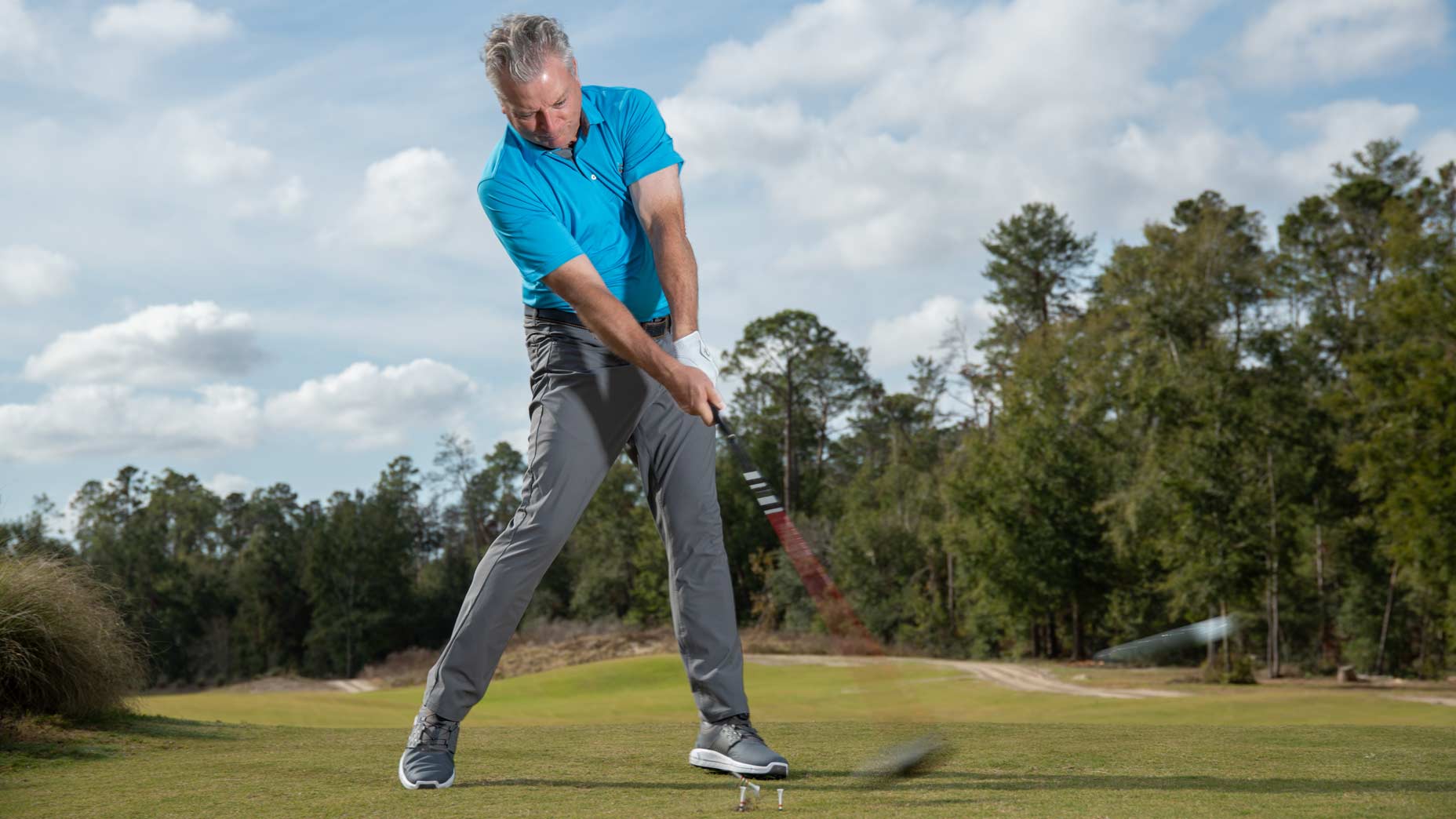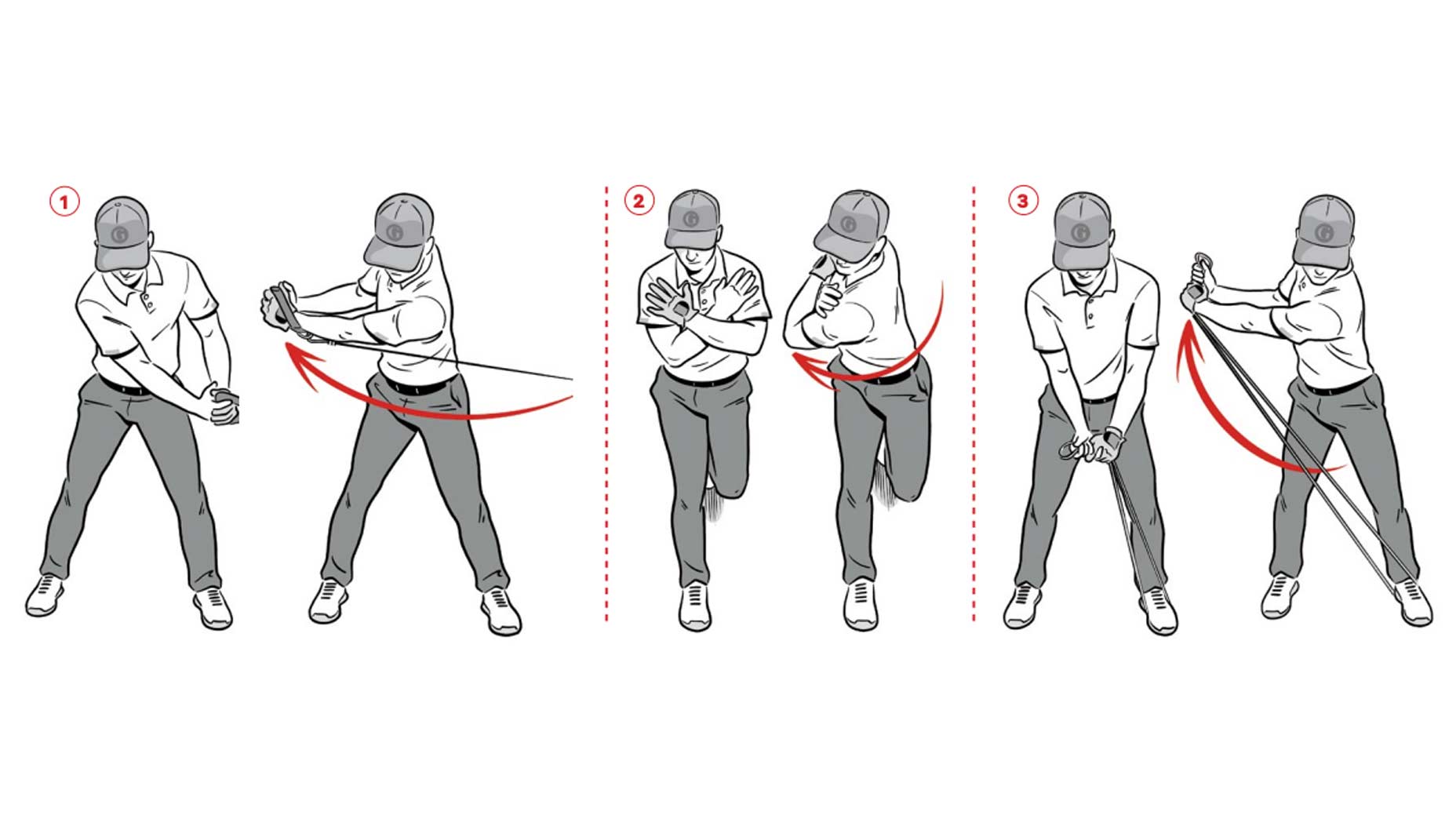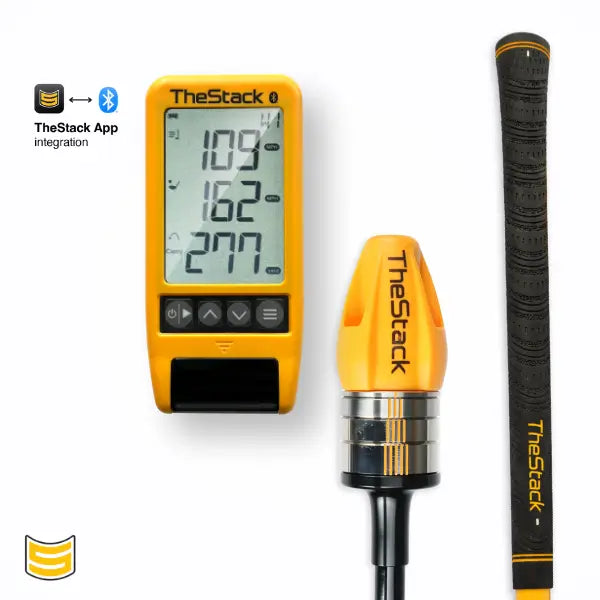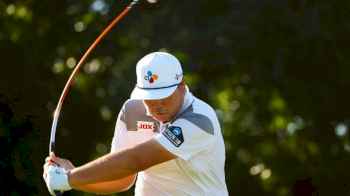7 expert-backed power tips to hit bombs off the tee
If you want to hit the ball farther, increasing your clubhead speed is the key. The secret? Getting comfortable with simply swinging faster. As our collection of GOLF Top 100 Teachers, fitness experts and some of the longest hitters on the planet will attest in the text below, anyone can do it.
Time to “go yard.”
Speed tip No. 1: Copy the Tour pros
The men’s pro game has seen a dramatic increase in swing speed over the last decade. In 2015, the average clubhead speed on the PGA Tour was 113.2 mph. This season, it’s 116.5.
No doubt pros have adjusted their training in order to hit it as far as they can. Two of the longest players in the pro game — Tony Finau and Bryson DeChambeau — are prime examples.
While Bryson’s body transformation grabbed headlines a few years back, it was but part of his power story. What really turned him into a 200 mph ball speed machine was his commitment to speed training.
“The best device for training speed is your desire,” DeChambeau says. Bryson pushed his limits by intentionally swinging as hard as possible, using tech to measure his progress. This “over-speed training” rewires the nervous system and trains the body to move faster.
Bryson didn’t treat speed as a side project — he made it a priority. Even five to 10 swings a day at max effort added up over time, teaching his body what fast really feels like.
Finau’s approach is much more managed: a wide backswing arc and proper sequencing on the way back down.
A wide backswing arc gives you more space and time to build speed, while good sequencing ensures the energy flows from the ground up, from the legs, hips, torso, arms to finally the club at the moment it really counts: impact.
Finau has toned down his once-massive backswing in recent seasons, but he’s still gaining speed thanks to how he moves through the ball. His big hitting advice? “Control what you can. Swing within yourself.”
Speed tip No. 2: Practice with speed in mind
Many golfers have been conditioned to “swing easy” or “stay behind the ball,” but, to gain speed, you need to raise your intensity. Think of it like throwing a football. Tossing it casually in the yard feels very different from launching a hard throw downfield. Golf requires the same mindset shift: You have to get excited to generate speed.
To help ramp up your swing speed, Top 100 Teacher Bernie Najar suggests treating your practice sessions differently. “You can’t swing fast for an hour straight unless you’re a professional long drive competitor,” he explains. Instead, focus on short, intense speed sessions where you elevate your heart rate and swing aggressively in bursts.

A sample session might look like this: warm up normally, then hit driver five times at near-normal speed to get comfortable. After that, push your intensity higher and swing at five balls at maximum effort, then rest for 90 seconds to two minutes before repeating. Keep going until you feel yourself losing speed — that’s your sign to stop. “That’s when you don’t want to push anymore, or you start just jogging instead of sprinting,” Najar says.
Physically, you’ll notice that you’re putting more energy into the start of the swing—maybe initiating your backswing a bit quicker. This doesn’t mean losing control but rather upping the overall intensity. Staying hydrated and forgetting about accuracy during these sessions is crucial. “This isn’t about hitting it straight,” Najar emphasizes. “It’s about retraining your brain to accept faster swings, to let it rip and have fun.”
Developing comfort with speed is like driving a car faster than you’re used to. At first, it feels wild and risky, but, with practice, it becomes natural. Najar has seen golfers increase their swing speed by 5 to 10 percent in a single session by simply adjusting their mindset and tempo.
One of Najar’s favorite analogies comes from his mentor Jim Hardy: “Imagine standing at the beach, where all you have to do is hit the ball into the ocean. Would you be nervous about missing? Probably not. But hitting down a narrow one-lane highway requires a completely different mindset. If you’re too concerned about control, you’ll never swing fast enough.”
The goal is to get your heart rate up, energy high and swing at full speed — even if it’s just for five minutes at a time.
Speed tip No. 3: Get in the gym
As you know by now, if you want to hit the ball farther, you must swing faster. What’s less commonly understood is how to build up your body’s capacity for speed. That’s where strength and conditioning coach Mike Carroll — founder of Fit for Golf and a trusted adviser of weekend warriors and Tour pros alike — comes in.
“Clubhead speed is just an expression of force,” Carroll says. “If you want more of it, your muscles need to produce more of it.” Simply put, stronger muscles mean greater potential for speed.
“Strength is the foundation,” he says. “Your body limits your output. If you’re not strong enough, no amount of technique work will make up for it.”
The golf swing uses nearly every major muscle group. That means your training should focus on your entire body.
“You want to target your quads and glutes for lower-body drive, your obliques and core for torso rotation and your shoulders and lats for upper-body speed,” Carroll says.
So, what are the best exercises to build those muscles? According to Carroll, it doesn’t matter as much as you think.
“The goal is to apply consistent, progressive stress to your muscles,” he says. “How you do that can vary depending on what equipment you have and what your body can handle.”
According to Carroll, you should train each major muscle group at least twice a week. “Research shows that about 10 sets per muscle group per week is ideal,” he says. “That can be split into two or three sessions. The key is consistency.”
If you’re serious about gaining distance, it’s not just about swinging harder. It’s about giving your body the tools to swing harder. And that starts with building a stronger, more powerful you.
“Think of it like upgrading your engine,” Carroll says.
Speed tip No. 4: Copy the Long Drive pros
When it comes to hitting bombs off the tee, few understand the skill better than those who live and die by the numbers on the launch monitor: World Long Drive pros like Justin James (No. 2 in the WLD open division in 2024). His take:
“There’s some great advice on these pages, but it’s important to build the proper foundation for speed first. Start with mobility, then add strength and finally fine-tune your technique. Only after those foundations are solid should you introduce speed training.”
James suggests taking a TPI-type assessment of your body to better understand how it moves and how to improve movement limitations. “Fix the body, then build the engine,” he says.
View this post on Instagram
Upping your ball speed doesn’t just come from swinging fast. It’s also the product of hitting the center of the face and increasing your smash factor. Because speed without solid contact is useless.
“Speed without [solid] contact is useless,” says Phyllis Meti, a five-time World Long Drive chapion. “As a coach, I always start with ball contact first. You can’t chase speed until your fundamentals are solid.”
Once you swing is dialed, then comes the fun part: speed training.
“Speed training has made the biggest difference for me,” says Monica Lieving, one of the longest pros in the WLD women’s division. “But it’s not just about swinging hard — it’s about being able to swing hard while maintaining your mechanics.”
Bottom line: Hitting the ball longer is a layered process — even for those whose singular focus is hitting bombs. Nail your fundamentals. Train your body. Practice swinging fast with control. And, most of all, swing like an athlete.
Speed tip No. 5: Build solid fundamentals
The team at Dewsweepers Golf (dewsweepersgolf. com) and Top 100 Teacher Tony Ruggiero focus on helping students in a way that makes them better players overall. It’s easy to show gains on a launch monitor or post flashy speed and distance numbers, but those don’t always translate into lower scores.
“Here’s how we approach it,” Ruggiero says. “First, we build a balanced, solid setup. The body’s primary job is to stay balanced and not fall over. Otherwise it’s tough to turn and rotate fully. From there, it’s about properly loading up on the backswing. We teach golfers to wind and load pressure into their trail leg rather than twisting. Many confuse loading and turning with simply twisting. We use specific drills and exercises that build the mobility and stability needed to wind properly into the trail leg.”
Three of their favorites are shown below.

1. Use a cable pulley at the gym or a stretchy band at home: Hold one end as if it were the club. Pull the band as far back as possible. You can only do it if you load more than twist.
2. Stand against a wall with your front foot set against it as shown. Now turn. You’ll quickly learn how much strength you need to accept a power load on your backswing.
3. Place a stretchy band underneath your lead foot and hold the other end in your hands. Make a backswing. The resistance will force you to stabilize your lower body as you move your arms to the top as you turn. If you’re a “lifter” of the club, this drill will expose it in seconds.
Speed tip No. 6: Understand your body
Swing speed isn’t just about swinging harder — it starts with understanding your body’s capabilities. GOLF Top 100 Teacher Jon Tattersall stresses the importance of beginning with a proper physical assessment to build speed safely and effectively.
“You can’t just throw a bigger engine into a car if the chassis isn’t built for it,” Tattersall says. “The same goes for your body.” Knowing where you stand physically helps tailor a plan to increase speed while minimizing injury risk.
A key part of this process is figuring out whether you need to improve your ability to generate speed or transfer that speed efficiently to the clubhead. Many golfers overlook the fact that generating speed isn’t only about accelerating — it’s equally about deceleration, or how well you can brake during the swing.
Speed Sticks Pro (NEW!)
View Product
Tattersall explains that the grip of the club must slow down just before impact to allow the clubhead to snap and whip through the ball. “If you keep accelerating the grip, the clubhead never fully releases,” he says. Golfers who lack the strength to decelerate properly often lose potential speed, as the clubhead trails behind instead of whipping past their hands.
Building that strength and control involves traditional strength training, particularly in the lower body. “To move fast, you have to be able to stop fast and push hard against the ground,” Tattersall says. The best hitters have strong, stable lower bodies paired with flexible but powerful upper bodies. The hips and thoracic spine generate most of the rotation.
A common mistake is focusing only on hip rotation without developing upper-body strength and mobility to support it. The goal is a strong, stable lower body combined with a flexible, powerful upper body to maximize speed and control.
Speed tip No. 7: Learn from the LPGA
If you’re looking to hit the ball farther, there’s more than one way to get there. Just ask Nanna Koerstz Madsen and Elizabeth Szokol, two LPGA pros who rank in the top 15 on tour in average driving distance. Both mash the ball off the tee, but their paths to get there are quite different.
For Madsen, the turning point came during the Covid lockdown.
“I got so slow because we weren’t doing anything,” she recalls. “So I thought, Oh s—, I need to get my speed back.”
Her solution: SuperSpeed sticks, a training tool designed to increase swing speed through overspeed training. Madsen committed to the program, training twice a week for two months at a time.
“SuperSpeed can help, and going to the gym is a good idea,” she says. “But honestly? Just rip it. Don’t be afraid to swing hard. Sometimes when you try to be too controlled, you’re actually less accurate.”
As Madsen chased speed directly, Szokol added 20 yards to her average driving distance by focusing on getting healthier.
After dealing with knee and back injuries, she prioritized building total body strength, especially in the lower body and core.
“I don’t do anything too specific — just try to keep my quads, glutes, hamstrings and core strong and stable,” she says. “It’s about staying healthy and being able to swing freely.”
That work paid off. As her body got stronger and more balanced, her clubhead speed began to return naturally.
“I haven’t worked on it intentionally,” she says. “But I feel like I’ve gotten my swing into a good place, and now I can move more freely. The speed kind of came back on its own.”
Szokol also emphasizes the importance of a proper warm-up. Her routine — often 30 to 40 minutes of foam rolling, stretching and activation work — gets her body primed to move at full speed.
“I spend more time warming up my body than hitting balls,” she says. “That’s probably the most important part of my prep. I think most rec golfers do the opposite. The way your body moves is the key.”
TheStack + Stack Radar Bundle
View Product
The post 7 expert-backed power tips to hit bombs off the tee appeared first on Golf.

 (@trlgolf)
(@trlgolf)



